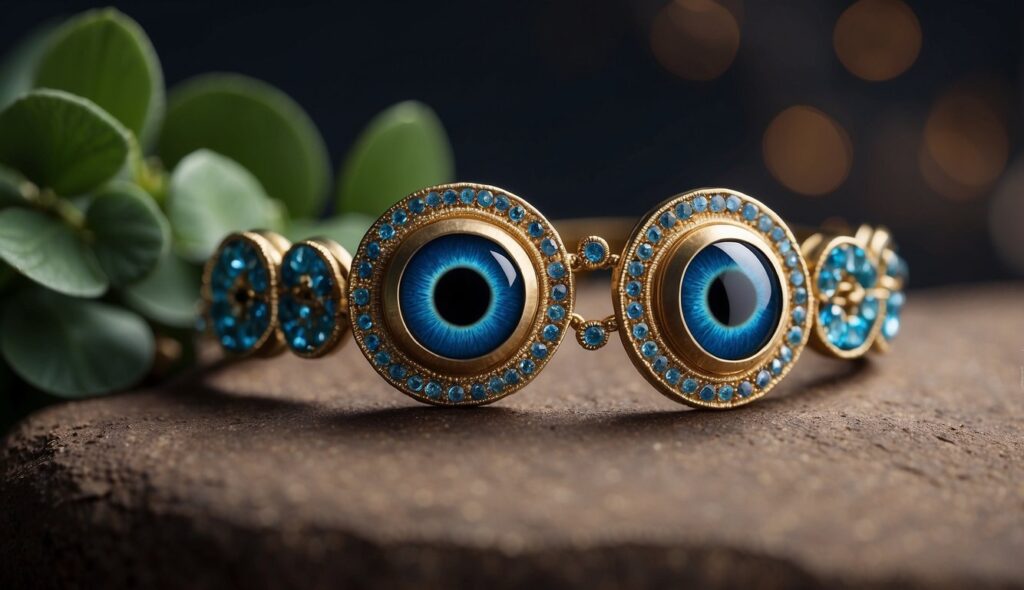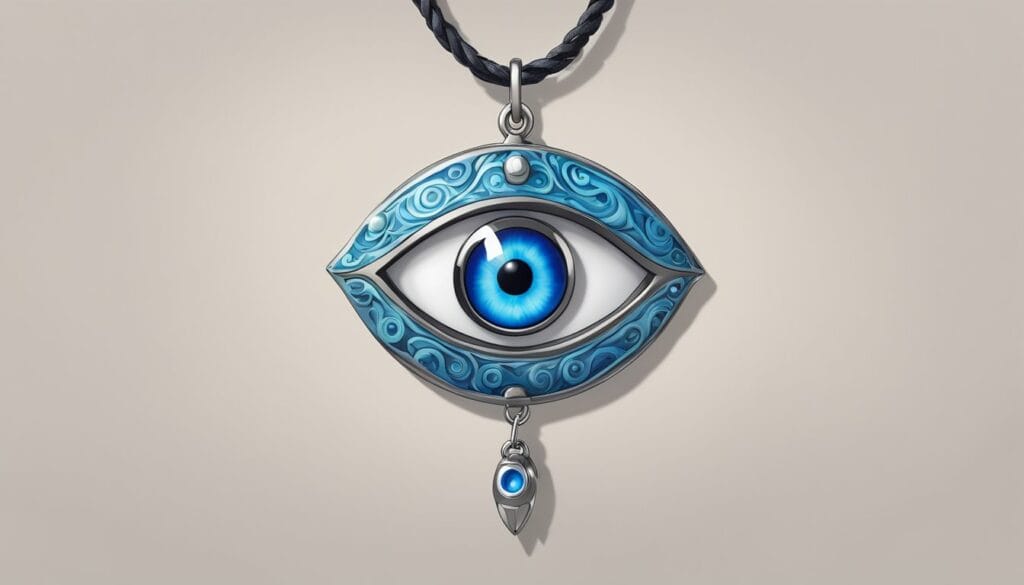The emoji 🧿, commonly known as the Nazar Amulet, carries a history steeped in symbolism and cultural significance.
In a digital age where communication is often limited to text and icons, emojis like the Nazar Amulet provide a rich layer of meaning and context. It represents a symbol that is believed to protect against the ‘evil eye’, a malevolent gaze that many cultures believe can bring bad luck to the person at whom it is directed.
Through its use in messaging and social media, the emoji has transcended its traditional role to become a symbol of protection and good luck in the digital world.
Key Takeaways
- The 🧿 emoji represents the Nazar amulet, believed to protect against the “evil eye.”
- Rooted in ancient beliefs, the emoji’s cultural significance spans regions like the Middle East, Mediterranean, South Asia, Latin America, Africa, and Europe.
- On social media, the emoji is used to signify protection against envy or negativity or, more generally, to represent eyes or watching.
What Does 🧿 Mean?
The 🧿 symbol represents the Nazar amulet, which is used to ward off the evil eye, a curse believed to be cast by a hateful glare.
The 🧿 emoji, often used in Instagram posts, texts, and other forms of communication, carries with it the connotation of wanting to protect against a jinx or bad luck.
When someone posts a picture or a statement that they feel particularly proud of or that might invite envy, they might add the 🧿 emoji to ward off any negative energy or to prevent their happiness or success from being “jinxed.”
It acts as a digital talisman, much like saying “knock on wood” in conversation, to keep away the evil eye or any ill-intentioned thoughts from others that might spoil their good fortune.
Historical and Cultural Significance
The evil eye emoji carries with it a depth of history and cultural significance.
The evil eye is an ancient concept, dating back to classical antiquity. You’ll find its origins steeped in the Mediterranean and West Asian regions.
According to tradition, this evil glare is believed to inflict harm or bad luck on the person at whom it is directed, often out of envy or malice. Its cultural prevalence is underscored by numerous references in classical Greek, Roman and Turkish texts, art, and folklore, where it is treated not as superstition, but as a formidable threat to an individual’s well-being.
Belief in the evil eye and the use of protective symbols like the Nazar amulet are found in various cultures around the world.
Here are some cultures where the belief in the evil eye is prominent:
- Middle Eastern Cultures: The belief in the evil eye is deeply ingrained in Middle Eastern cultures, including Arabic, Turkish, and Persian traditions. The Nazar amulet, with its distinctive blue eye, is commonly used for protection.
- Mediterranean Cultures: Countries around the Mediterranean, such as Greece, Italy, and Spain, strongly believe in the evil eye. Protective symbols, including charms and amulets, are used to ward off its effects.
- South Asian Cultures: The concept of the evil eye is prevalent in South Asian cultures, including India and Pakistan. Similar protective symbols and rituals are employed to counteract the perceived negative effects.
- Latin American Cultures: Various Latin American cultures, including those in Mexico and Central America, have beliefs in the evil eye. Protective practices often involve the use of charms and talismans.
- African Cultures: Some African cultures, particularly in North Africa, also have beliefs in the evil eye. Protective measures may include the use of charms and rituals.
- European Cultures: Certain European cultures, especially those around the Mediterranean region, have historical beliefs in the evil eye. The use of protective symbols and gestures is not uncommon.
It’s important to note that the specifics of the belief, the protective symbols used, and the cultural practices associated with the evil eye can vary widely even within these regions. Additionally, beliefs in the evil eye are not limited to these regions, as variations of the concept can be found in diverse cultures worldwide.
Emoji Usage and Interpretation
The emoji 🧿 represents the ‘nazar’ amulet, but its interpretation and use can vary significantly across different digital platforms and cultures.
🧿 in Digital Communication
When you use the 🧿 emoji in your messages on platforms like WhatsApp, Snapchat, or TikTok, you often convey a desire to protect yourself or the recipient from bad luck or negative energies.
The symbol has found its way into the digital vernacular for expressing support, solidarity, or even just a trendy way to decorate a text.
On social media, you may see the emoji used in captions or comments to ward off negative comments or to accompany posts about overcoming challenges.
Cross-Platform Variations
Although the basic design of the 🧿 emoji is consistent, subtle visual differences can exist between platforms like iPhone and Android devices.
Each platform, from social media apps to various emoticon libraries, interprets the design of emojis slightly differently.
For example, the 🧿 on WhatsApp might have a slightly different colour or shine than the one on TikTok, which can affect its visual impact.
However, regardless of these variations, the emoji’s protective symbolism remains its essence across platforms.
Associated Meanings and Connotations
The emoji 🧿 encompasses a spectrum of meanings and cultural significances. It can symbolise luck as well as protection against negative forces.
Conveying Emotions and States
Hope and Courage: When you utilise the 🧿, you’re often expressing a desire for well-being or a feeling of optimism. It’s a symbol of hope—imbued with the belief that one can avert danger or harm. This emoji often aligns with feelings of courage, serving as an emblem of strength to face life’s numerous challenges.
Ward off negative vibes: If you’re sending the 🧿 emoji, it might mean you’re trying to convey a protective barrier against adversity or negative emotions. It’s a modern way to reference the ancient practice of wearing amulets to ward off the evil eye.
Amulet of Hope and Luck
Symbol for Good Fortune: The emoji 🧿 represents an amulet historically connected with bringing luck. You might use it when wishing someone well or when you’re embarking on a new venture, hoping it brings good fortune.
Safeguard from the Evil Eye: Rooted in tradition, the 🧿 is seen as a talisman against the evil eye—an unwelcome stare believed to bring bad luck or misfortune. By incorporating the 🧿 emoji in your messages, you signal your desire to protect yourself or others from these unseen forces.
🧿 in Popular Culture and Media
The 🧿 icon is not just a protective symbol against the evil eye; it’s a fashionable icon that has made its way into various aspects of popular culture and media.
Influence in Fashion and Jewelry
You will often see the Nazar amulet embedded in fashion and jewellery items. Designers incorporate the symbol into necklaces, bracelets, and even clothing patterns. Its distinct blue and white eye motif serves as both a talisman and a trendy accessory, favoured by those who appreciate a blend of cultural heritage and contemporary style.

Representation in Social Media and Memes
On social media platforms like TikTok, the 🧿 emoji pops up in messages and group chats, often representing good luck or a shield against negativity. It’s also a staple in memes and digital combos, paired with other emojis to create riddles or phrases that communicate a specific sentiment or jest.
Frequently Asked Questions
What is the significance of the evil eye in various spiritual belief systems?
In many cultures, the evil eye is believed to ward off negativity and protect the wearer. It’s a symbol of vigilance that is thought to reflect ill intent to the onlooker.
How is the evil eye symbol utilised within Islamic tradition?
Within Islamic tradition, the evil eye, or ‘nazar’, is a concept mentioned in the Hadith literature. It is often used as a bead and hung in homes or worn as a charm, as a means to safeguard against misfortune.
What is the symbolism attached to an evil eye pendant?
An evil eye pendant is a talisman or amulet meant to protect you from negative energies. The belief is that the pendant deflects harm and brings good luck to its bearer.




